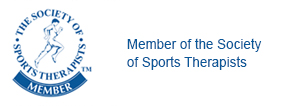
Dry Needling (Modern Acupuncture)
What is dry needling? Dry needling uses a thin filiform needle that penetrates the soft tissues. Such needles have a thin flexible pointed tip to allow for a very quick, often pain free penetration of the skin; the same are used in acupuncture. Dry needling will typically affect pain, healing and the release of trigger points. Research done on dry needling and acupuncture have concluded positive effects of both treatment methods with reference to pain and muscular tension reduction.
What is the difference between dry needling and acupuncture? This is a question asked frequently within the clinic. The answer is fairly simple within itself. There are many similarities, such as; the needles used are the same, the application of inserting the needle is the same and of course what we are trying to achieve is exactly the same. However, acupuncture is based on chinese medicine revolving around the chinese meridian chain of the body. Essentially this comprises various energy chains around the body and the connection of all our tissues. Dry needling is a slightly more modern technique developed specifically for more current isolated techniques. Rather than needling specific meridian points in the body, dry needling is about isolating the area affected and targeting those tissues directly with the needles. Once the needles have been applied and once settled we are further able to manipulate the needle to access more tissue.
Why use Dry Needling? Dry needling is now a treatment method we are using everyday in clinic and have had such fantastic results when doing so. Whether it is reducing shoulder tension, easing lower back pain, healing muscle strains or fixing tendon injuries, dry needling is often very beneficial. It is important to state that dry needling is never a treatment method we impose on patients. Further to formal written consent, we always ensure every patient is fully comfortable with needles and would not push anyone out of their comfort zone.
How does it work? This out of all questions is probably the most complicated to answer. The easiest response refers to stimulating blood flow. One of the main components to good and quick healing is blood flow to an injury site. Therefore if you are able to get a needle to the injury/tension site you will be able to cause a small level of trauma (good trauma) which will cause bleeding and therefore attract blood flow to the site. The best example of this is the treatment of a tendinopathy. These tend to be long term chronic overuse of a tendon, eventually causing localised pain and stiffness. Tendons tend to have a poor blood supply (slow healers), therefore being able to cause direct bleeding and trauma to the problem site will encourage healing and trigger a healing response from the brain. Further research on the effects of dry needling revolve around how it can reduce pain within an area. These include disrupting the way in which our brain is feeling pain. Essentially our brain does not like to receive too much sensory information at one time. By causing another stimulus for the brain to process we can cause a pain distraction. Furthermore, at any point we peirce our skin, automatically an adrenaline is released in our brain which works to reduce our pain within seconds.
Conclusion: Most of our dry needling applications are done in partnership with physiotherapy practises and rehabilitation. However you are now able to book in for a 30 minute dry needling session on its own. These sessions will begin with an initial consultation, followed by a specific dry needling written consent where we discuss all the necessary information before going into the treatment. If you wish to make a booking please email info@oceansportstherapy.com OR give us a call (not available to book online). Any further questions do not hesitate to get in touch!

